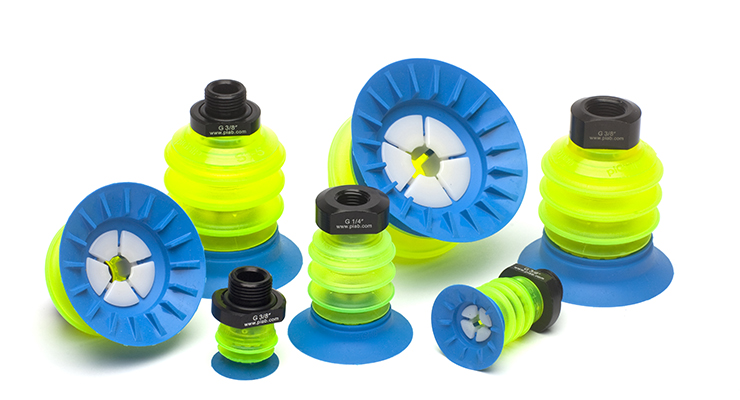 A bag of sweets dropped on the floor in the plant’s packaging area. Or a bag of frozen peas deformed from its original square shape into a messy plastic package with an ugly cone-shaped suction mark. These are the kind of problems faced by manufacturers wishing to use a vacuum-based automated system to handle bags, regardless of whether these contain sweets, peas, or something entirely different.
A bag of sweets dropped on the floor in the plant’s packaging area. Or a bag of frozen peas deformed from its original square shape into a messy plastic package with an ugly cone-shaped suction mark. These are the kind of problems faced by manufacturers wishing to use a vacuum-based automated system to handle bags, regardless of whether these contain sweets, peas, or something entirely different.
Traditionally, vacuum-based bag handling systems have been marred by problems to the extent that it has been almost impossible to use them. Getting the suction right for the job is a delicate balancing act. However, innovative technology is available that enables the safe, secure and efficient operation of automated bag handling systems
Piab’s solution is a series of piGRIP bag lips, known as “BGI.” These lips include an internal retainer piece as well as three additional diameter sizes. The bag lips are ideal for handling different types of bag materials, especially hard-to-handle thin bag material, such as plastic film. The six diameter sizes now at 25, 34, 41, 48, 63 & 80 mm provides a larger range of sizes for choosing the exact cup for the handling application.
The special lip design in combination with the rigid and strong piGRIP bellows/body allows for bag handling speeds and accelerations never used before in automation equipment for bags/pouches. Beside regular plastic bags for dry food (e.g. chips), the piGRIP bag lips were designed to have an excellent grip on stand-up-pouches filled with liquid or dry/wet food/substances.
The range of diameter sizes allows for very small and/or oblong narrow flexible packages (fast-food ketchup packs) to be handled by the smallest 25 mm size. The largest size, 80 mm, addresses the need for handling heavy bags or sacks such as animal feed sacks.
The retainer piece prevents thin bags or films from being drawn into the cup, thus improving the grip performance as well as eliminating marks on the thin bag materials. The lip material and the retainer piece are made of FDA approved materials.
A strong bonding solution between the lip and bellows will prevent lips from coming off during working cycles, even for extremely rough conditions (high speed and greasy environments). The locking sleeve, in terms of a retainer, guarantees the lip will stay in position. Cost savings are possible from exchangeable lips, thanks to the locking solution — you only need to replace the lip and not entire bag cup-fitting.
Piab
www.piab.com
Filed Under: Pneumatic Tips